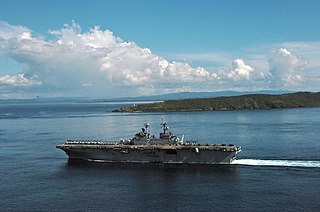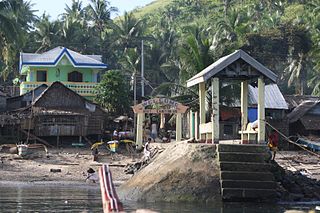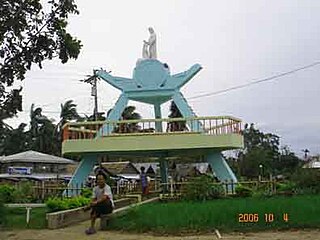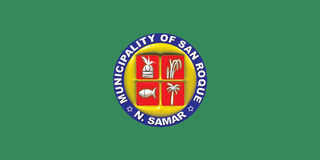This article needs additional citations for verification .(April 2013) |
San Jose | |
|---|---|
| Municipality of San Jose | |
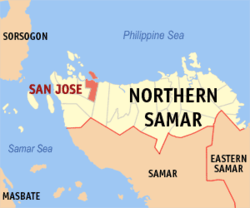 Map of Northern Samar with San Jose highlighted | |
Location within the Philippines | |
| Coordinates: 12°31′52″N124°29′13″E / 12.531°N 124.487°E | |
| Country | Philippines |
| Region | Eastern Visayas |
| Province | Northern Samar |
| District | 1st district |
| Founded | July 25, 1949 |
| Barangays | 16 (see Barangays) |
| Government | |
| • Type | Sangguniang Bayan |
| • Mayor | Clarence E. Dato |
| • Vice Mayor | Raul T. Robles |
| • Representative | Paul R. Daza |
| • Councilors | List |
| • Electorate | 12,994 voters (2022) |
| Area | |
| • Total | 29.85 km2 (11.53 sq mi) |
| Elevation | 19 m (62 ft) |
| Highest elevation | 287 m (942 ft) |
| Lowest elevation | −5 m (−16 ft) |
| Population (2020 census) [3] | |
| • Total | 17,641 |
| • Density | 590/km2 (1,500/sq mi) |
| • Households | 4,218 |
| Economy | |
| • Income class | 5th municipal income class |
| • Poverty incidence | 32.10 |
| • Revenue | ₱ 106.9 million (2020) |
| • Assets | ₱ 209.8 million (2020) |
| • Expenditure | ₱ 92.05 million (2020) |
| • Liabilities | ₱ 49.09 million (2020) |
| Service provider | |
| • Electricity | Northern Samar Electric Cooperative (NORSAMELCO) |
| Time zone | UTC+8 (PST) |
| ZIP code | 6402 |
| PSGC | |
| IDD : area code | +63 (0)55 |
| Native languages | Waray Tagalog |
| Website | www |
San Jose, officially the Municipality of San Jose (Waray : Bungto han San Jose; Tagalog : Bayan ng San Jose), is a 5th class municipality in the province of Northern Samar, Philippines. According to the 2020 census, it has a population of 17,641 people. [3]
Contents
- History
- Geography
- Bodies of water
- Climate
- Barangays
- Demographics
- Economy
- Government
- Facilities
- Notable personalities
- References
- External links
It is located at the north central part of the province, about 19 kilometres (12 mi) west of Catarman, the provincial capital, and about 30 kilometres (19 mi) east of Allen, where the ferry terminal is which connects the islands of Luzon, Samar, Leyte, and Mindanao via the Pan-Philippine Highway (formerly the Maharlika Highway). It is approximately 150 kilometres (93 mi) north-north-east of Tacloban City, the Regional Center of the Eastern Visayas.
Politically, the municipality is bounded on the north by the Philippine Sea, on the east by the Municipality of Bobon, on the south by the Municipality of Victoria and on the west by the Municipality of Rosario.



